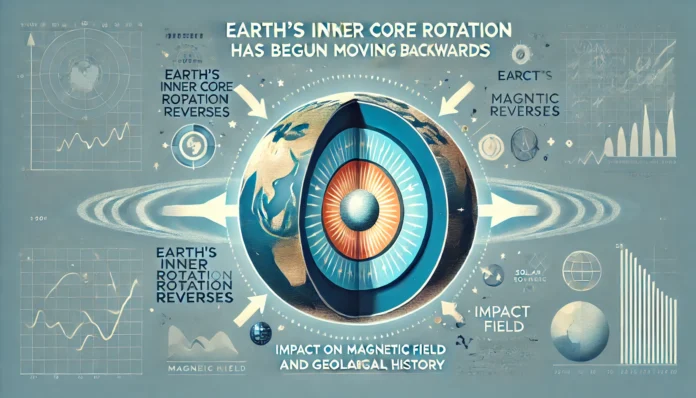Recent research reveals that Earth’s inner core, a solid metal sphere, has slowed down and started rotating in the opposite direction. This change is part of a 70-year cycle and may affect Earth’s magnetic field, which protects the planet from harmful solar radiation. Understanding these shifts is crucial for insights into Earth’s geological history and future impacts on the magnetic field.
Earth’s Inner Core Rotation Has Begun Moving Backwards
Research Findings
Scientists have discovered that Earth’s inner core, which is a solid metallic sphere, has slowed down its rotation and is now moving in the opposite direction. This phenomenon is part of a larger 70-year cycle of rotational changes. Researchers utilized seismic wave data to identify this shift, which was detailed in a recent publication.
Seismic Wave Analysis
The study analyzed seismic waves generated by earthquakes and observed how they traveled through the inner core. Variations in the speed and direction of these waves over time indicated the core’s changing rotational dynamics. This change in rotation could have significant implications for our understanding of Earth’s internal processes.
Impact on the Magnetic Field
The inner core plays a crucial role in generating Earth’s magnetic field through the geodynamo process. Changes in the core’s rotation could influence the behavior of the magnetic field, which protects the planet from harmful solar radiation and cosmic rays. These alterations might lead to observable effects on the surface, such as fluctuations in magnetic strength and direction.
Historical Context
Historically, shifts in the Earth’s magnetic field have been linked to changes in the inner core’s rotation. By studying these patterns, scientists aim to better predict future changes and their potential impacts. This research provides valuable insights into the complex interactions within Earth’s interior.
Why This Is Important
Understanding the dynamics of Earth’s inner core is vital for comprehending the planet’s geophysical behavior. This knowledge helps scientists predict changes in the magnetic field, which has direct implications for navigation systems, animal migration patterns, and the protection against solar and cosmic radiation.
Possible Implications
Magnetic Field Variations: Potential changes in Earth’s magnetic field strength and direction. Geophysical Research: Enhanced understanding of Earth’s internal processes and their broader impacts. Technological Impact: Implications for technologies relying on the magnetic field, such as navigation and communication systems.
What to Follow
Scientific Updates: Follow ongoing research on Earth’s inner core and its rotational dynamics. Magnetic Field Observations: Monitor changes in Earth’s magnetic field strength and orientation. Technological Adjustments: Stay informed about any technological adjustments needed due to changes in the magnetic field.
Conclusion
The reversal of Earth’s inner core rotation is a significant geophysical event that could influence the planet’s magnetic field and other internal processes. Continued research is essential to fully understand the implications of this phenomenon and its potential impacts on Earth’s environment and technological systems.
Source: Earth.com


